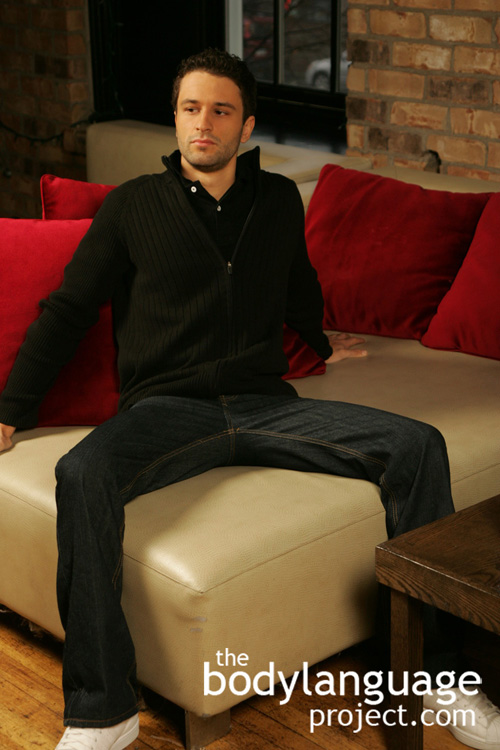
The western version of the crotch display. Imagine this fella totally nude! Perhaps not attractive to women, but his assertiveness might be.
There are a few postures that men use to display their prowess, but the jury is out as to whether or not women find them attractive per se. One of these postures is the cowboy posture which happens by placing the thumbs in a belt loop and aiming the remaining fingers toward the genitals. Interested women do tend to look at the crotch of men of interest, but performing the display might not make a man appear more sexually attractive.
A second version of the crotch display is to keep the legs spread open where the hand may be found on the inside of the thigh in a “ready position” or propped up on a knee. These signals are less of a sexual invitation than they are signal of their dominance over others in the room, which in and of itself makes them appear more attractive to women. New Guinea natives use what is called the penis sheath, also called koteka, horim or penis gourd to emphasis and draw attention to their genitals. It is usually made from a dried gourd and tied with a small loop around the scrotum with a secondary loop tied around the chest or abdomen and is worn without clothing. The penis sheath is usually tied in an upward position but some tribes position them to point straight out, up or at an angle. The penis sheath is an excellent example of sexually selected behaviour that came about through culture and serves to illustrate the power behind the male crotch display. What is done by western cultures is not much different if modesty and the clothing is stripped aside, so to speak. Western men use slight of hand through pointing and leg spreading to draw eyes, whereas the penis sheath draws attention to male prowess through a much more obvious and grand scale.
Micheal Jackson had no shortage of female fans and perhaps this was due to his frequent crotch grabs, although I suspect it has more to do with his deep pockets (or maybe his signing talent?). Men also draw attention to their crotch in other ways such as with their hands by motioning or placing a hand on the inner thigh, or re-orienting so the crotch faces the women directly. Men use subtle preening gestures such as fixing hair, straightening a tie or collar, or removing lint, but these aren’t as common when compared to women as sexual signals. This runs us full circle to our original though and that is that men display attractiveness through status and dominant indicators rather than any physical cue or posture. As it where though, some of men’s body positions can reveal this very characteristic.

